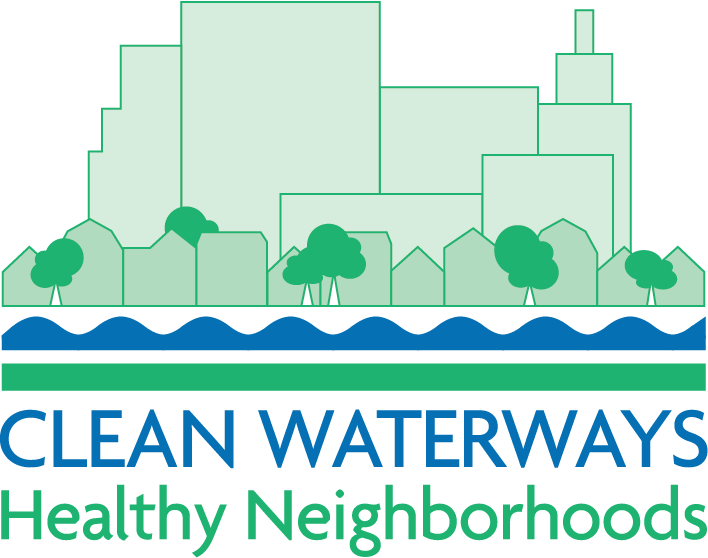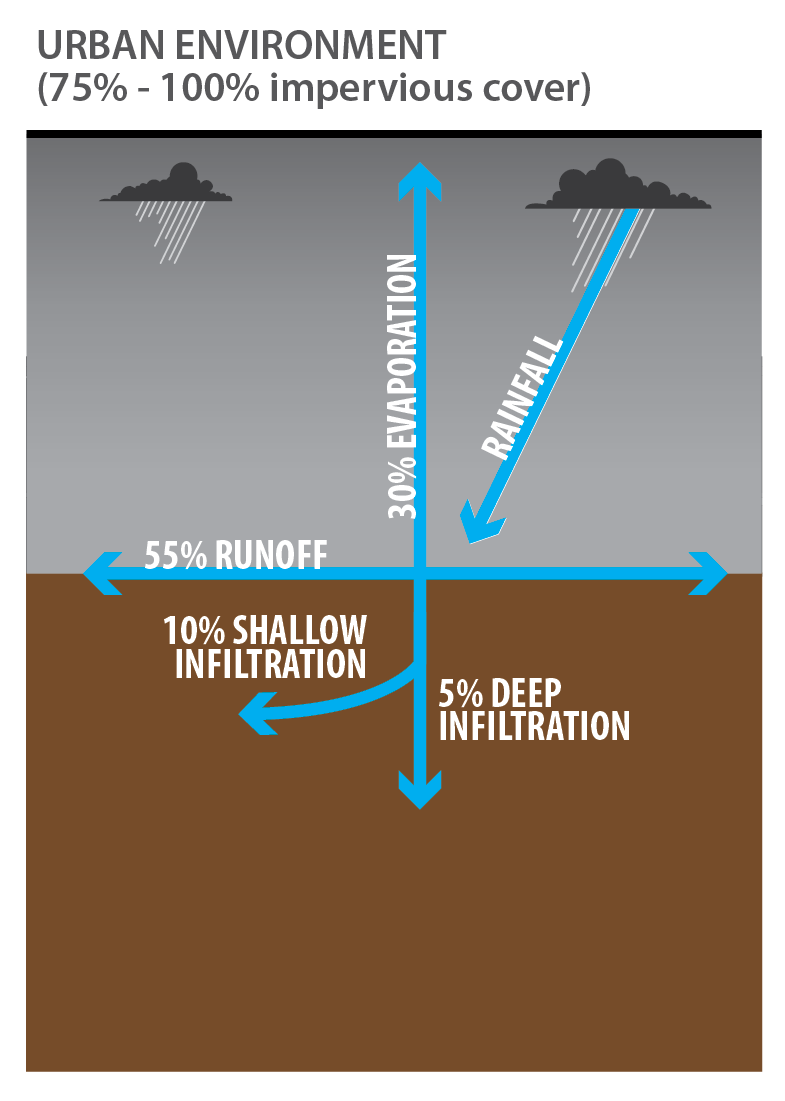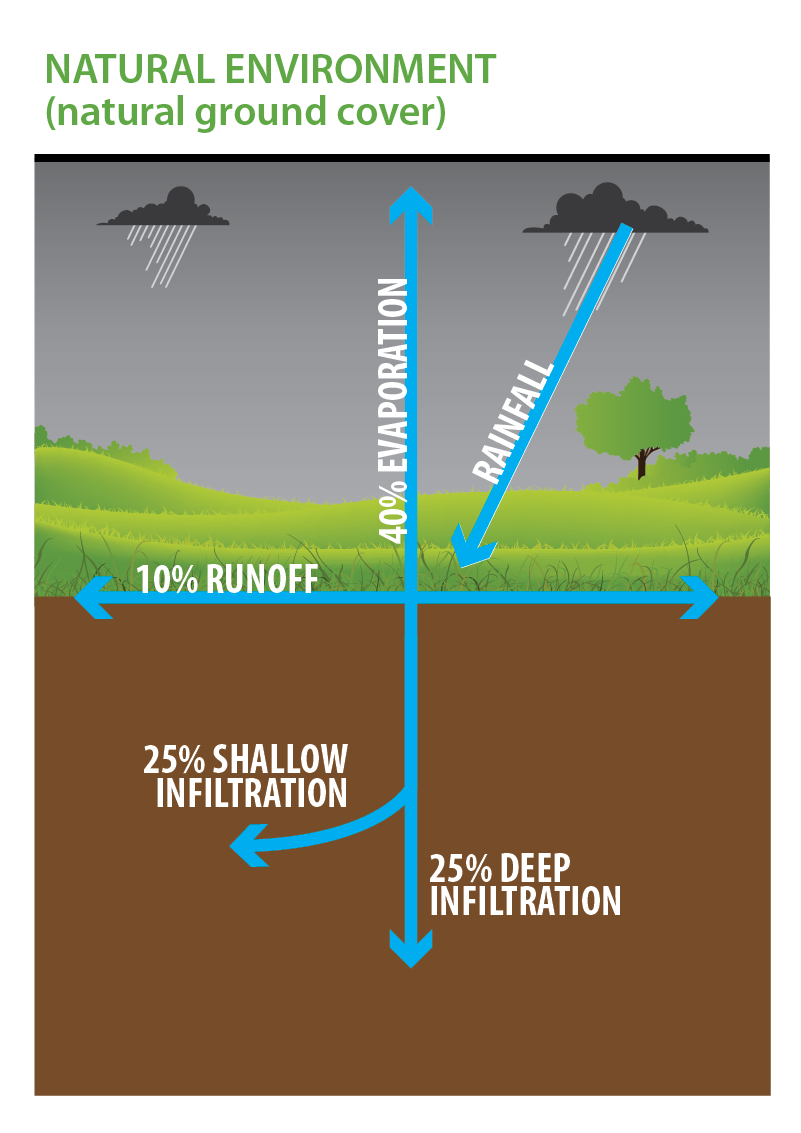What is Green Infrastructure?
Green Infrastructure (GI) practices manage stormwater by taking advantage of the earth’s natural processes. These include allowing water to infiltrate into the soil, evaporate into the air, or for plants to use the water and transpire it as vapor. These practices can reduce the amount of stormwater that enters a combined sewer system.
Green Infrastructure for Combined Sewer Systems
GI technologies treat stormwater as a resource, not something to eliminate. Also known as low-impact development or adaptive management, these techniques capture, infiltrate, treat and reuse polluted runoff before it enters the sewer system. GI offers environmental, social, and economic benefits. It can increase property values, beautify neighborhoods, cool extreme summer temperatures, support natural habitat, create local green jobs, and enhance public space.
Green Infrastructure practices include:
rain gardens
porous pavement/asphalt
green roofs
infiltration planters
trees and tree boxes
rain barrels
rainwater harvesting for non-potable uses such as toilet flushing and landscape irrigation
To learn more about Green Infrastructure visit the NJDEP Green Infrastructure website and check out the NJDEP “Evaluating Green Infrastructure” and EPA “Greening CSO Plans” publications.
Green Infrastructure Municipal Outreach and Technical Assistance Program
The GI Municipal Outreach And Technical Assistance Program is a partnership between the Passaic Valley Sewerage Commission (PVSC) and Rutgers University Cooperative Extension Water Resources Program to pilot an outreach and technical assistance program providing guidance and direction to the 48 municipalities in the PVSC service area regarding the benefits and opportunities of implementing green infrastructure practices. As of 2019, the team has completed two rain-harvesting projects in Harrison and East Orange, NJ. Both are school rain gardens at various schools that collect stormwater from rooftops that would otherwise puddle on playgrounds and eventually make it to nearby sewers, collecting trash and other forms of debris along the way. Learn more about these projects via this December 2019 article by The Observer.
Targeted efforts are needed for the management of stormwater runoff using green infrastructure so that municipalities can begin to alleviate localized flooding, protect and improve water quality, reduce inflow and infiltration and combined sewer overflows to local waterways. Through education, outreach, and community-driven demonstration projects, the program partners are providing municipalities with information they can use to make practical, science-based, and cost-effective decisions about water, wastewater, and stormwater management to improve the quality of life of residents while protecting the water resources of the region.
For more information please visit the Green Infrastructure Municipal Outreach and Technical Assistance Program website.







